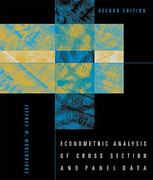Question
The government in South Africa is planning an irrigation project to increase maize to help improve food security. The total land area identified to benefit
The government in South Africa is planning an irrigation project to increase maize to help improve food security. The total land area identified to benefit from the irrigation project is 1000 hectares. The land is already being used to produce maize. The average market price of land in the location is 10,000 Rands per hectare. Assume the land market is competitive
The current maize yields (production per hectare) in the area is 5 tonnes per ha without irrigation and 10 tonnes per hectare with irrigation. The maize can be sold in nearby market for 1500 Rands per tonne.
Assume also that South Africa is a net importer of maize and imports maize mostly from the US. The FOB at US Gulf port is US$350 per tonne (1 tonne =1000 kg). Assume freight, insurance and unloading (FIU) cost at Durban is 150 Rands per tonne. Assume also that landing and port charges (LP) at Durban is 150 Rands per tonne. Local transport and marketing costs (TM) to a market near the project site is 220 Rands per tonne. Primary marketing cost (retail level) (PM) is 80 Rands per tonne and storage cost (ST) is 80 Rands per tonne.
Labour is considered non-tradable and the labour market is competitive. Labour cost is estimated at 1200 Rands per tonne of maize produced.
Other input cost for the maize production (such as fertilizers, tools, pesticides) is expected to total 2200 Rands per hectare.
The cost of harvesting is 500 Rands per tonne.
The irrigation infrastructure is expected to cost 7,500,000 Rands and an annual maintenance cost of 25,000 Rands.
The use of the land for maize production creates environmental problems such as soil compaction and groundwater contamination estimated at 10% of the value of production.
The irrigation project also creates additional external impacts on downstream water uses through water contamination and stagnation at a cost of 1000 Rands per tonne of maize produced.
Analysis using Social Accounting Matrix (SAM) has shown that the increase in maize production will reduce malnutrition in the surrounding areas by 5%. Malnutrition in the surrounding areas is costing households and the country 4,200,000 rand per year.
US$1 = 17 Rands. The Rand is said to be undervalued by 10%
The project's life span is 15 years
Assume a discount rate of 7%
Please answer the following with the information above with any other additional assumptions you may have. Make sure you specify any assumptions you will make.
A.With a spreadsheet estimate
The Present Value Cost - Financial
The present Value Benefits - Financial
The Present Value Cost - Economic
The present Value Benefits - Economic
B.Determine whether the project is
i)Financially feasible,
ii)Economically feasible
Use the following criteria
Net Present Value Criteria
Benefit Cost Ratio
***PLEASE ATTACH YOUR SPREADSHEET TO YOUR ANSWER
Step by Step Solution
There are 3 Steps involved in it
Step: 1

Get Instant Access to Expert-Tailored Solutions
See step-by-step solutions with expert insights and AI powered tools for academic success
Step: 2

Step: 3

Ace Your Homework with AI
Get the answers you need in no time with our AI-driven, step-by-step assistance
Get Started


